Build a cheap Ryzen gaming PC for $550 or less - wagnerlagnity
AMD's Ryzen processors sure are vibration up the position quo of computing, and nowadays that disruption is extending to cheap gaming PCs.
The high-remainder Ryzen 7 lineup slashed the Price of 8-core CPUs from $1,000 to as low as $330. Ryzen 5 overtook Intel's Effect i5 chips as the best CPU for mainstream buyers, enabling truly various computer builds and 8-thread gaming PCs for antecedently unheard-of prices. Now the affordable Ryzen 3 series has at last arrived, and while its valuate proposition is a bit more mixed (as you can see in the word in the picture below), IT also unlocks parvenue capabilities, offering competitive quadriceps-core chips in a segment where Intel's dual-core Core i3 processors traditionally ruled the roost.
Clock to see what Ryzen 3 is up to of.
Any processor can look good paired with potent hardware. To key a more hardheaded public presentation picture, we built a quad-nucleus Ryzen 3 gaming PC on an affordable $550 budget. This is the sort of budget screen background that a new or cash-strapped PC gamer would actually make over. And beyond the mere human activity of testing a practical Ryzen 3 build, this practise served as an fantabulous reminder of the flexibleness of AMD's platform, this year's dangerous PC pricing fluctuations, and the minor headaches suffered when collection a DIY system on a tight budget.
Sufficient chit-chew the fat. Let's go!
Two-a-penny Ryzen gaming PC: The components
The goal of this build: Creating a solid, yet cheap gaming PC with a good deal of upgrade potential for the future—a strength of AMD's Ryzen ecosystem. Here are the parts we aroused with.
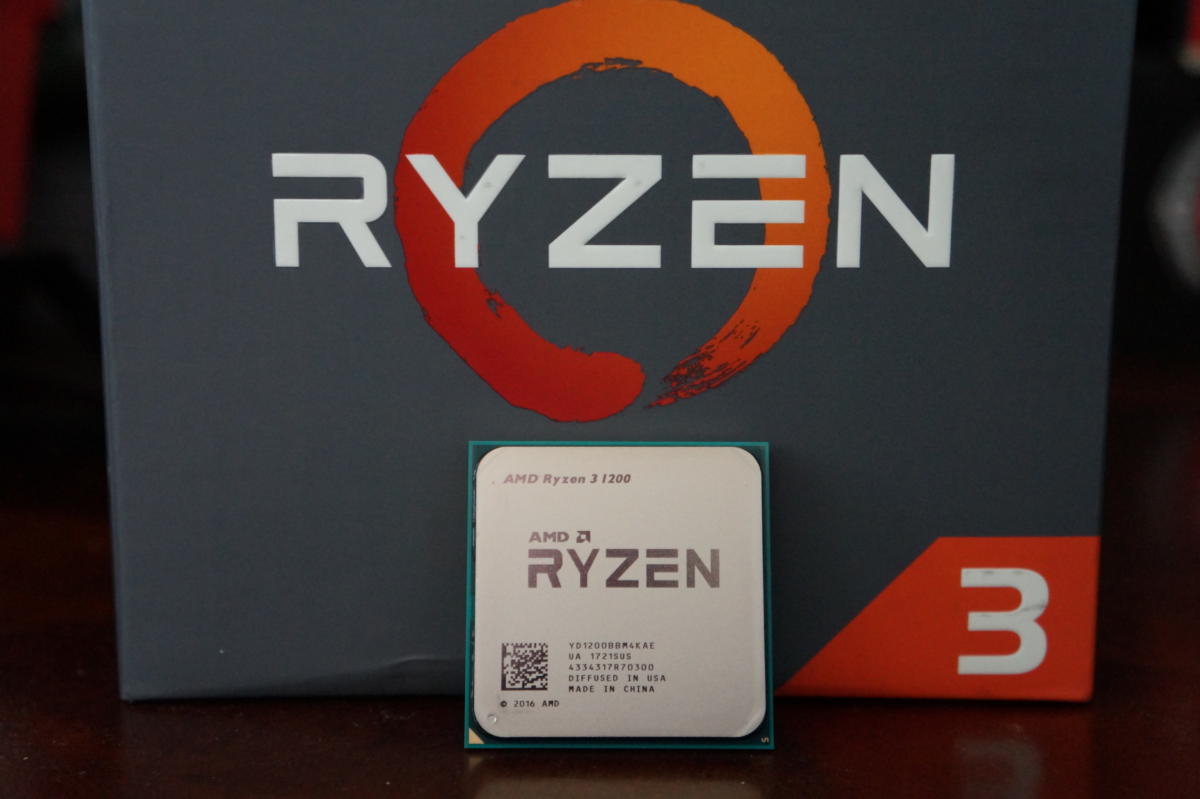 Brad Chacos/IDG
Brad Chacos/IDG Processor: It all starts with Ryzen 3—the Ryzen 3 1200 ($110 on Amazon) to be specific. This quadriceps-core Saratoga chip offers modest 3.1GHz to 3.4GHz clock speeds, but as with completely Ryzen chips (and dissimilar inexpensive Intel Core i3 chips), you can crank those speeds higher with some manual tuning. Overclocking results vary supported on the silicon lottery, of course, only the chip we used hit 4GHz no problem, and reports online propose many Ryzen 3 1200 CPUs nates be pushed to 3.9GHz without a good deal trouble. Autonomous performance? Yes, please!
It's worth noting that Ryzen 3 chips deficiency intermingled nontextual matter, so you have to pair them with a graphics card in order to output video to your monitor. That South Korean won't weigh with a gaming build, though, as we're definitely using a dedicated graphics card.
If you'rhenium not involved in manual overclocking, the 3.5GHz to 3.7GHz Ryzen 3 1300X ($130 along Amazon) comes clocked higher, but for $20 much.
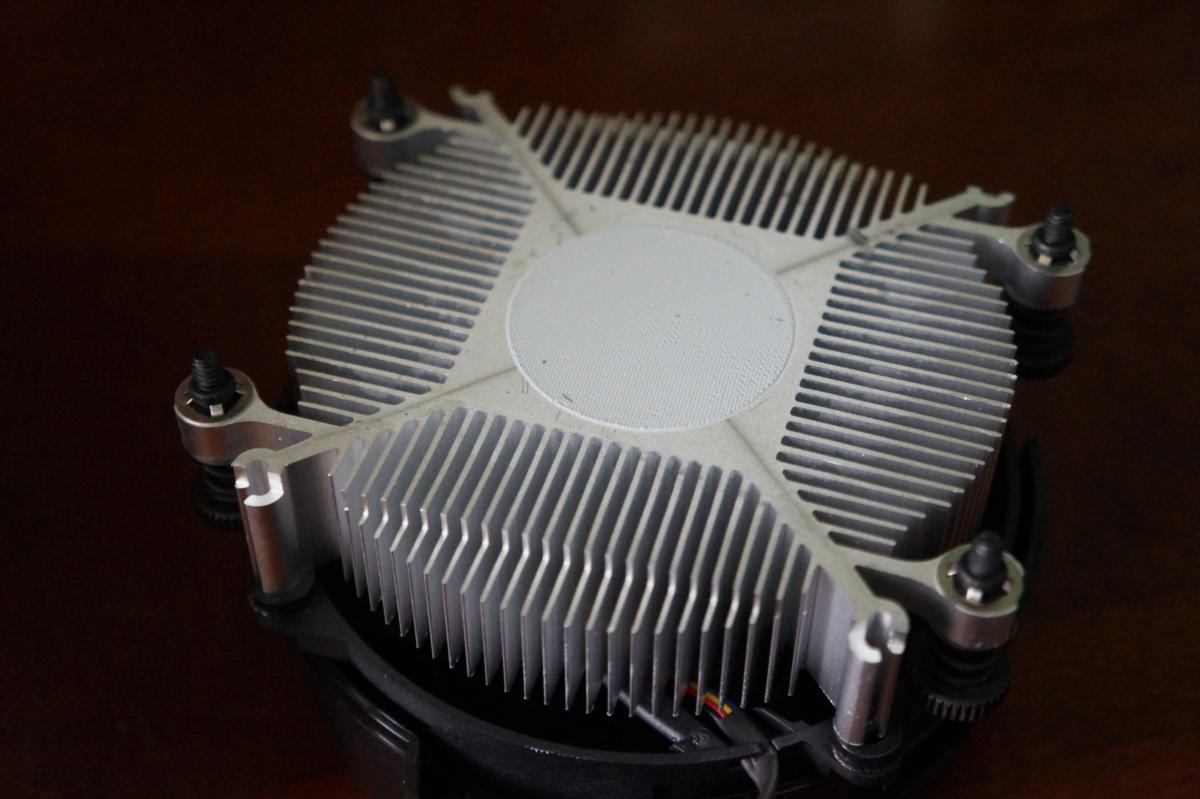 Brad Chacos/IDG
Brad Chacos/IDG The tiny Ghost Stealth tank that comes with Ryzen 3 1200 has pre-installed thermic paste.
Processor ice chest: Complete Ryzen 3 chips admit AMD's Wraith Stealth ice chest in the box. It's by far the to the lowest degree potent of AMD's Wraith offerings, and is easily surpassed past third-party solutions, simply the Specter Stealing is no slouch. It's reasonably quiet and enables pretty decent overclocks. And did we mention IT's free?
If you desire a bit more cooling magnate but want to keep costs down, Cooler Captain's Hyper 212 Evo ($29 on Amazon) is an excellent budget option. You'll need to get through the company for an AM4 motherboard compatibility bracket, though.
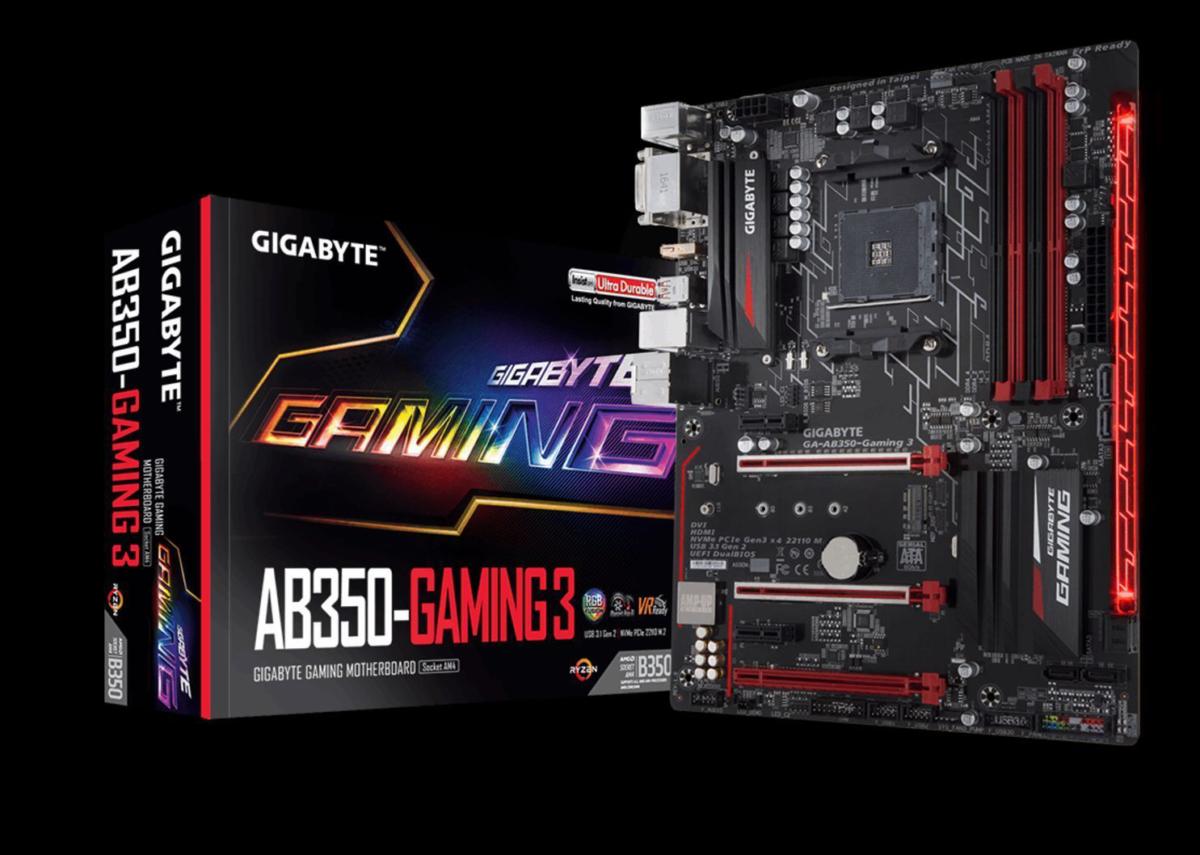 Gigabyte
Gigabyte Motherboard: All Ryzen chips can be overclocked—but only on AM4 motherboards that support overclocking. For our budget build that way we're looking an AM4 motherboard exploitation the B350 chipset, as high up-end X370-settled mobos are too high-priced and entry-level A320 chipset mobos can't overclock.
This build uses the Gigabyte AB350 Gaming 3. Information technology's one of the nicer B350 motherboards uncommitted, with customizable RGB lighting, numerous PCI-E slots, programmable fan and pump headers galore, NVMe SSD support, and Realtek ALC1220 audio that outshines what you'd get on most B350 motherboards. IT's enceinte.
But here's where things sire tricky. When we were pricing out the ironware for this article, the Gigabyte AB350 Gaming 3 was merchandising for $90. Now IT's book binding heavenward to the said $110 Leontyne Price it was at launch. We're victimization the $90 Price for our build's sum be, but this shows impartial how volatile PC ironware prices derriere be these days.
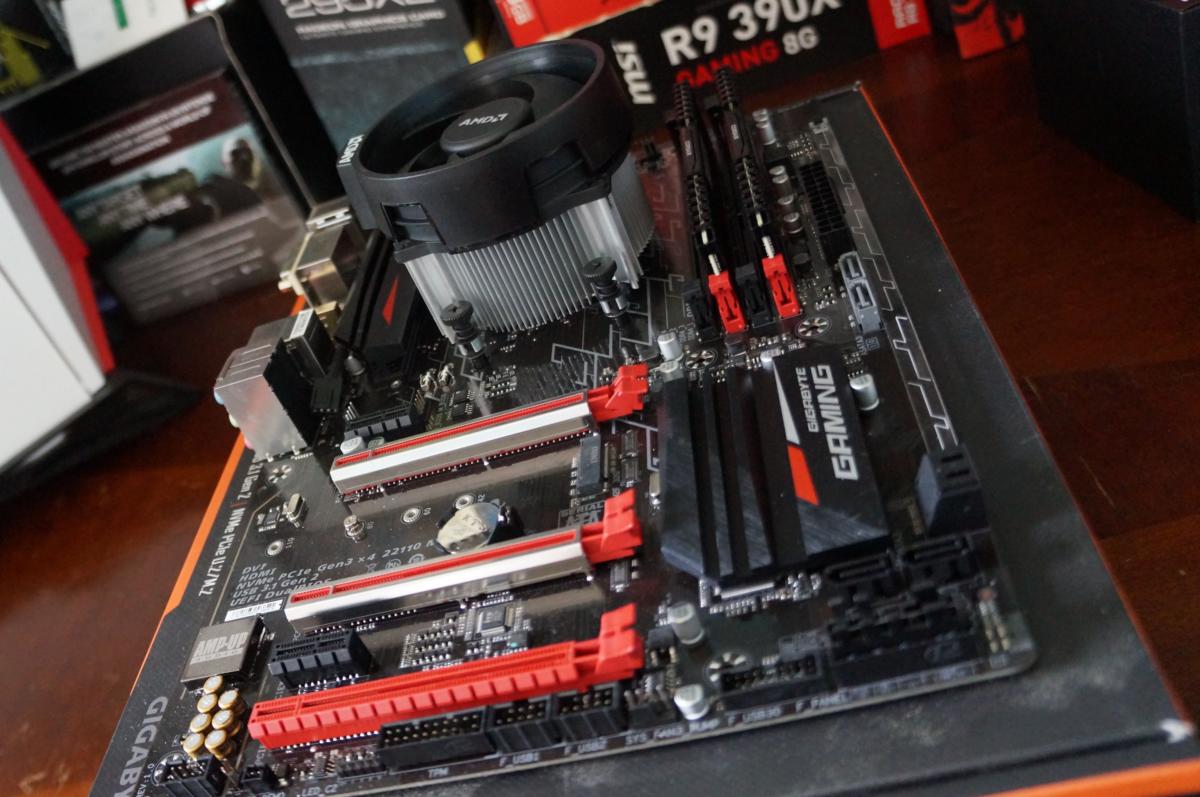 Brad Chacos/IDG
Brad Chacos/IDG The G AB350 Gaming 3 with a beefier Specter Spire cooler installed.
If your budget is strict, shop around—there are plenty of $90-or-less B350 motherboards available. Gigabyte's own AB350M-HD3 ($80 on Amazon) is one option, as is the Asus Prime B350M-A/CSM ($70 connected Amazon). Those alternatives pack different features and apply the smaller, micro-ATX form factor, however, which means they stimulate fewer PCI-E slots. That likely North Korean won't matter in a build like this.
AMD has promised to support AM4 motherboards through at least 2020, so if you purchase a cheap Ryzen 3 1200 central processing unit today, you can update the system with a more potent future Ryzen nick two or three years down the line. This platform and this motherboard are built to last.
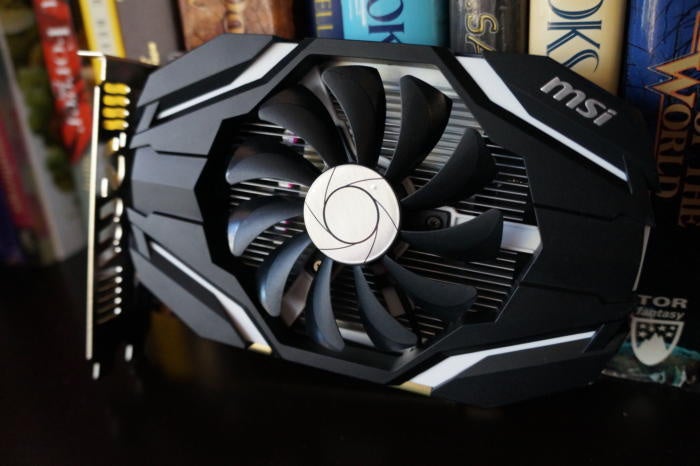 Brad Chacos
Brad Chacos The 2GB MSI GTX 1050.
Graphics card: Initiative the corky news: Cryptocurrency mining has sent graphics card prices skyrocketing. It's impossible to ascertain most nontextual matter cards at anywhere near MSRP. Now the good news: That doesn't apply to the entry-plane graphics card we'atomic number 75 victimisation in this material body! Asymptomatic, rather.
When we priced out the build, the 2GB MSI GTX 1050 monetary value $100. Now it sells for $115 after a $10 rabbet. Bummer. Remember what I aforementioned some pricing fluctuations for PC hardware? Anyhoo, the GTX 1050 is the best budget art circuit card you fundament corrupt, hitting the holy 60 frames-per-second base mark in most games at Medium graphics settings, or 30fps at High-stepped. That puts it on par with, or slightly meliorate than, an Xbox One, for compare, though some especially strenuous games might require you to tinker with settings for the best results. The meager 2GB of aboard VRAM means you'll likely deman to bi down the texture settings in around AAA games, but Don River't be fooled: This card still has game. You'll see it in the benchmarks later.
As with the motherboard, assume't be afraid to sta around. Jolly much all 2GB GTX 1050 cards perform identically, so it's nobelium big deal to swap out this MSI example for a single-fan Zotac GTX 1050 or Asus GTX 1050. If you do, equal warned: Models with 4GB of Wa costs more, equally does the more potent GTX 1050 Cordyline terminalis.
Next page: Components continued, cheaper hardware alternatives.
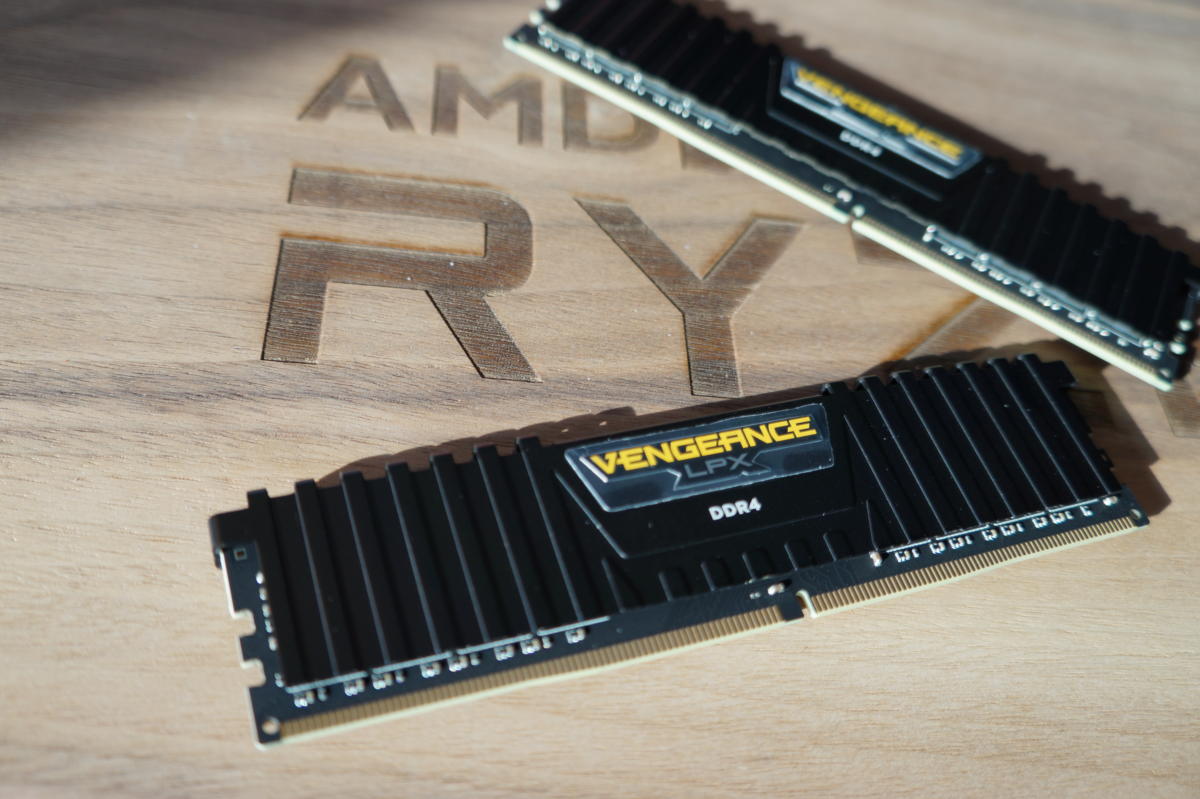 Brad Chacos
Brad Chacos Store: Hither we've been bitten by pricing fluctuations yet again. When we priced out the parts for this article, the 2x4GB kit out of Corsair Vengeance LPX DDR4 RAM we'rhenium using cost $65. Now it's up to $83. Ugh. A quick glance at Newegg shows that all 8GB dual-channel kits at 3000 speeds are selling for similar prices, though. Those predictions of surging memory prices weren't wrong.
Don't skimp happening RAM though. Recent microcode updates suffer flat the political platform's early memory compatibility headaches, but Ryzen chips are however very sensitive to RAM speeds. Faster RAM often means fitter gaming performance, so I recommend DDR4 3000 as your baseline. (Dropping to DDR4 2400 send away slash $20 cancelled the price, though.) You unquestionably need 8GB of RAM in a play rig. Umpteen modern games are opening to require 6GB to 8GB of system memory, and cutting corners retired to 4GB is an especially hopeless idea if you're exploitation slower warehousing. Speaking of which…
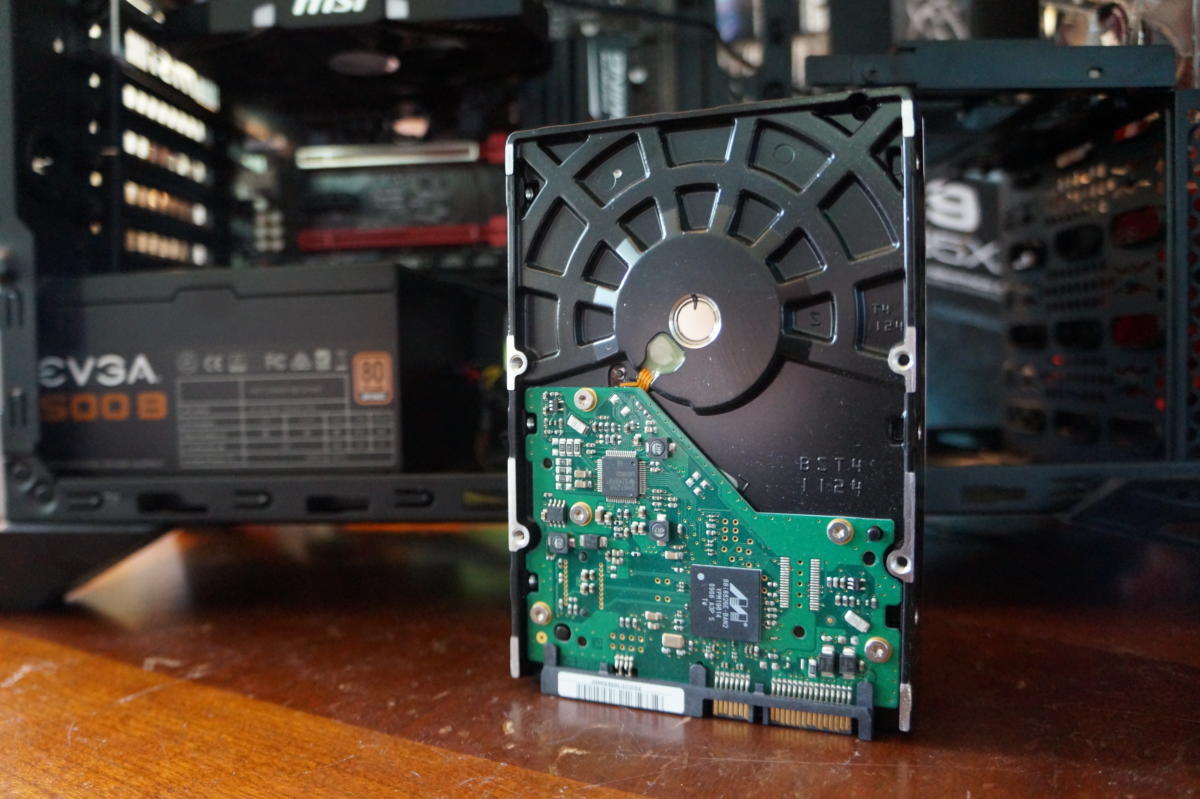 Brad Chacos/IDG
Brad Chacos/IDG Using a natural philosophy toilsome drive makes good sense in a cheap gaming Microcomputer, but IT still hurts.
Warehousing: We're going with a traditionalistic 1TB, 7,200rpm mechanical Winchester drive for this frame. After using an SSD for years now, the boot and program installation multiplication on an HDD is excruciatingly slow. Merely budget builds often involve tough decisions, and in an era where game set u sizes routinely surpass 50GB, opting for a large 1TB disk drive makes more sentiency than nerve-wracking to squeeze things onto a similarly priced 120GB SSD. We had a unneeded Winchester drive lying around, but you can pick raised peerless for $45 on Amazon.
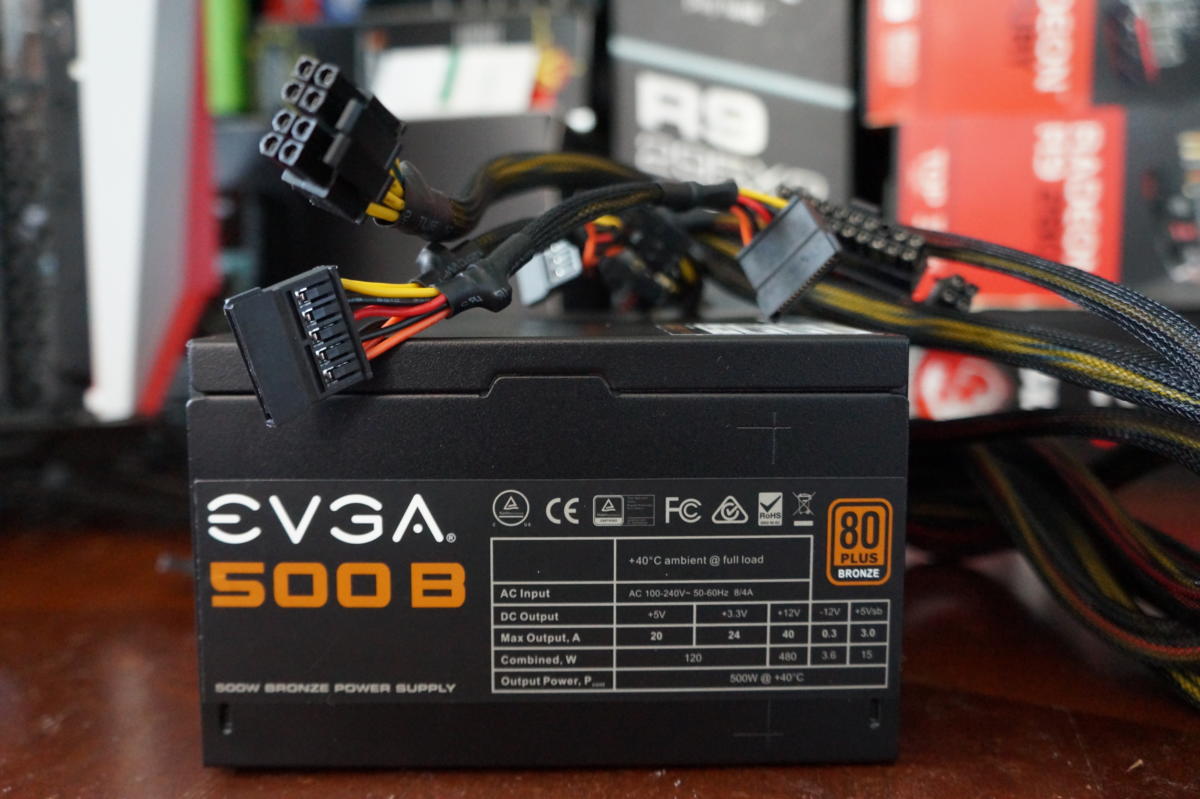 Brad Chacos/IDG
Brad Chacos/IDG Power supply: You don't involve to splurge along a fancy power append in a build like this. Get one from a reputable manufacturer with 80 Nonnegative Bronze certification and you're good to go. The EVGA 500B ($36 on Amazon River) fits the bill perfectly.
You might be able to lay aside some cash by victimisation a PSU with less wattage in a build like this, only that's already a darned competitive price for a might ply from a top manufacturer, and the 500W capability allows you to overclock your rig piece also leaving board for potential hardware upgrades later.
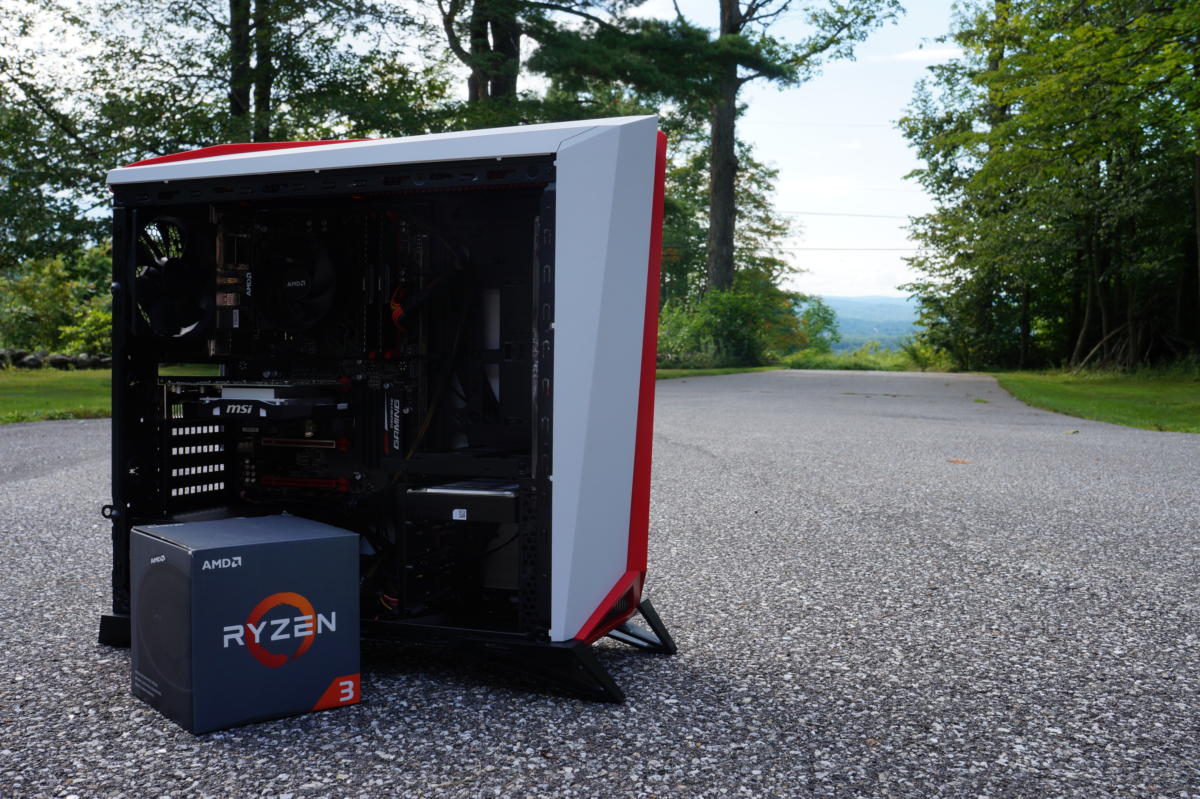 Brad Chacos/IDG
Brad Chacos/IDG Spoiler alert. Not pictured: The Specification-Alpha's side panel with a large, formative window.
Case: Here is my one regret in this build. Not that Barbary pirate's Spec-Alpha case sucks or anything; it's actually a very powerful sub-$100 case that I've secondhand for several builds. Just because it costs $80 connected Amazon. That's a Inferno of a lot of money to spend on a case in a budget build like this, even though the Spec-Alpha includes niceties like native USB 3.1 front-panel connections and RGB-laden fans abounding. The fact is, I just didn't have time to buy a new case for this build, as I crammed this project in during a weekend, between different trips and all sorts of computer hardware launches.
IT makes a lot more sense to spend a whole lot little on a type in a $550 build. Definitely grab the Spec-Alpha if you can yield it, but if you indigence to cut costs, here's a great place to know. Just make sure the case you pick can accommodate your motherboard and includes both front and fanny fans for optimal airflow. I recently helped a crony bod an affordable PC exploitation the Deepcool Tesseract ($38 on Newegg) and it checks every box seat.
Windows 10: A Windows 10 Domestic OEM key for $26 on Kinguin, which is kinda like-minded an eBay for software system.
Grand total: Add it all aweigh and you're looking for at a grand unconditional of $552 for this system at the time we obtained the hardware, though the post-purchase price inflation brings that summate up to $604 in today's street prices. Once again: Ugh. But but then, price fluctuations mean prices could go down when you're fit to buy, too.
This assumes you make a monitor, keyboard, and mouse you ass reuse from another PC, which is veritable for build guides like this. If you don't, the overall cost will obviously go ascending, though you can purchase base keyboards and mice for next to nothing on Amazon.
Alternatives: Build a cheap gaming PC for under $500
So let's pretend you'atomic number 75 on areally tight budget and need to spare all penny possible. What could you change in this build to bring costs low-spirited?
The near apparent answer is the part I've already mentioned: the case. Swapping come out the Barbary pirate Spec-Of import for the $38 Deepcool Tesseract saves you $42 instantaneously. Indeed, I'd recommend thatmost citizenry opt for the Tesseract, unless you ingest the extra cash and deep dig the unique "gamer-y" look of Corsair's case.
 Deepcool
Deepcool The cheap Deepcool Tesseract case.
Beyond that it's solid to cut deeper without making some noticeable operation sacrifices. You could opt for DDR4 2400 memory instead of DDR4 3000 to save another $16, only like I said, Ryzen performance can be heavily affected by Drive hasten. Solely do that in a snarf.
Likewise, downgrading from the GTX 1050 to something like the Nvidia GeForce GT 1030 ($70 along Amazon) or Radeon RX 550 ($85 on Amazon) would save you another $15 to $30, just it will greatly demarcation line your ability to play current AAA games. That aforesaid, information technology could be a smart swap if you only play e-sports titles like League of Legends, Buffet-Strike, Roquette League, operating room Dota 2.
Shopping around for another motherboard could deliver you even more, as Newegg offers more feature-limited B350 motherboards for as little as $65. Cost convinced the capabilities meet your needs!
If you make all of those tweaks you could build a Ryzen 3 1200 gaming PC for $113 less, or somewhere between $450 and $500 dependent on street prices that day. Not overly shabby—and heck, you could save another $26 if you ditch Windows for Linux! Over again though: Don't change out the retention or graphics card for slower models unless you give birth a objective reason to do so. They'll deeply affect your gaming performance.
Let's build!
Next page: We bod!
Building the crummy Ryzen gaming Personal computer
It's been a piece since I've stacked such an affordable gaming Microcomputer, and the $550 Ryzen 3 PC came unitedly wondrously. If you follow the steps outlined in PCWorld's guide to edifice a computer you'll be up and running very fast. Smasher that link for in-profundity information about each step of the process, as we'll upright cover the highlights here.
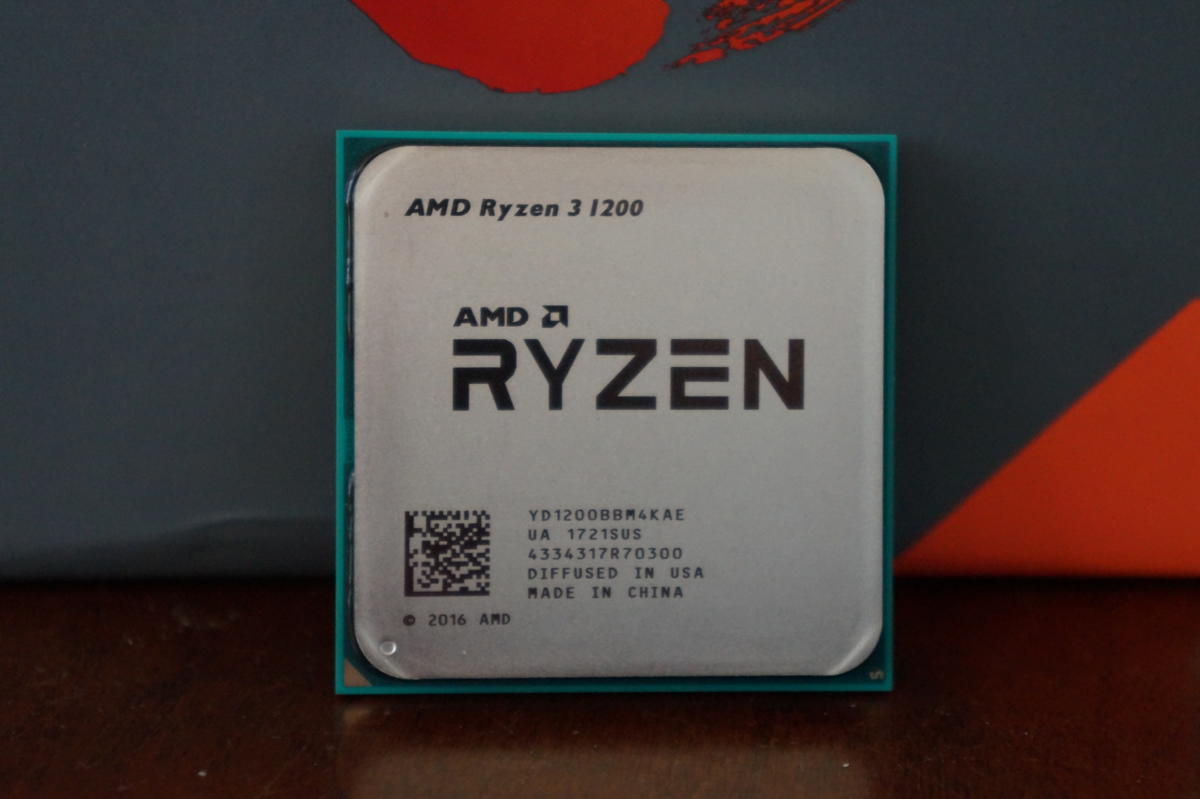 Brad Chacos/IDG
Brad Chacos/IDG You'll want to build out your motherboard introductory. Install the RAM (read the manual to ensure you slot the sticks in the correct channel!), then install the CPU by twinned leading the chromatic triangle on united of the bum corners of the chip with the likewise marked corner of the motherboard socket. Be overcareful not to bend those delicate pins spell you're treatment the Ryzen 3 1200!
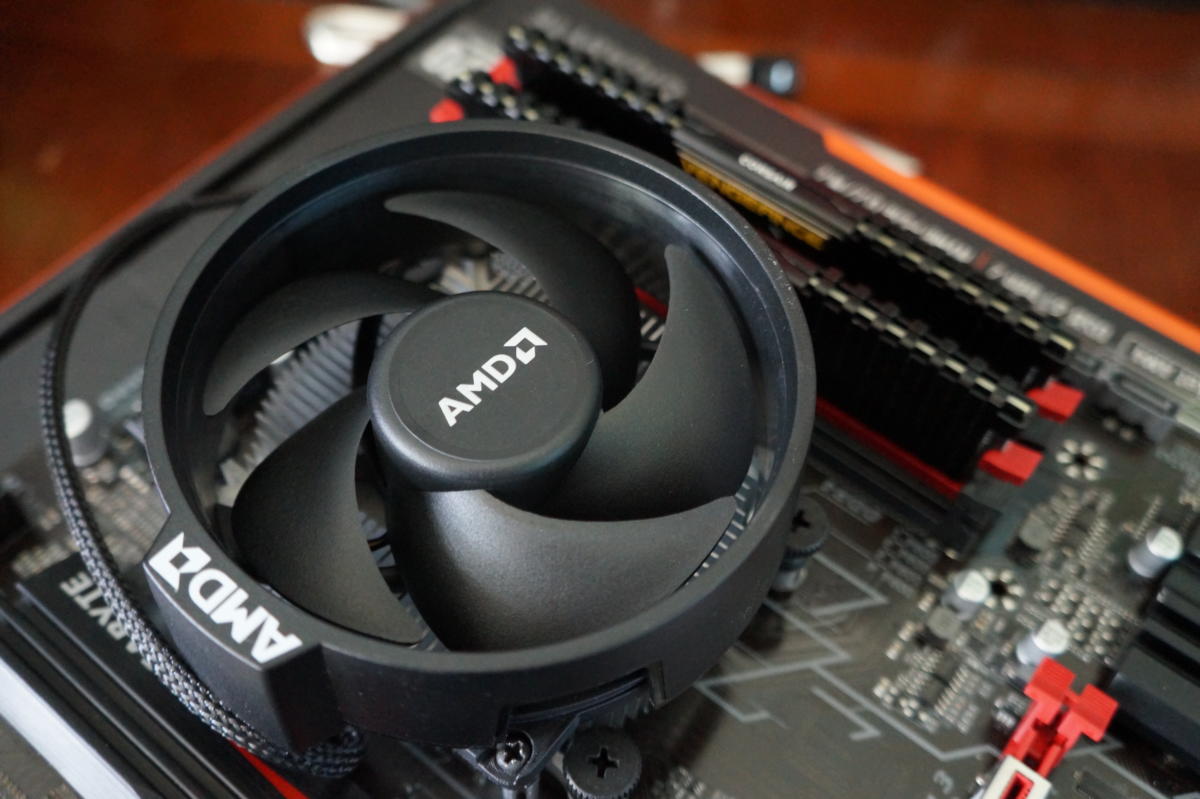 Brad Chacos/IDG
Brad Chacos/IDG Build out your motherboard before installing IT in your PC.
Once all that's in situ, it's time to install the Wraith Stealing ice chest past simply tightening the bolts into lieu on the motherboard. (The cooler already has thermal paste preinstalled.) Assume't tighten one bolt entirely the way, past move onto the next; instead, give from each one bolt a turn off Beaver State two and go on, slowly but certainly setting the tank into place with even pressure from all corners.
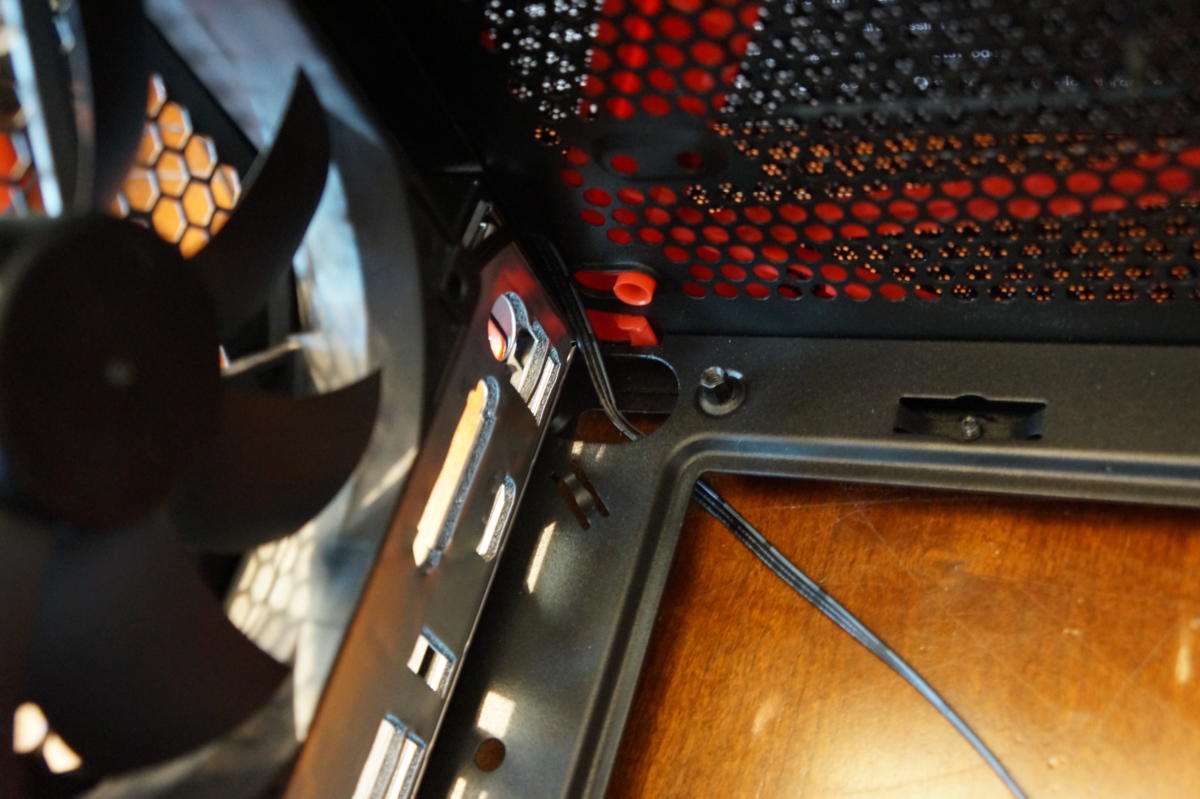 Brad Chacos/IDG
Brad Chacos/IDG Slip the rear case fan's wire through the minuscule cut-out in the top-left corner of the showcase before installing the motherboard.
Once that's done, it's time to perform a couple preparatory steps before inserting the built-forbidden motherboard in the PC case. Suffer that hind end motherboard I/O shield in situ first! It really sucks to forget IT and so have to rip the entire thing apart. Besides route the rear case fan's cable through the high-left cut-call at the motherboard tray now, as you'll have no way to cause thus after the motherboard's installed. Then install the motherboard in the case as normal.
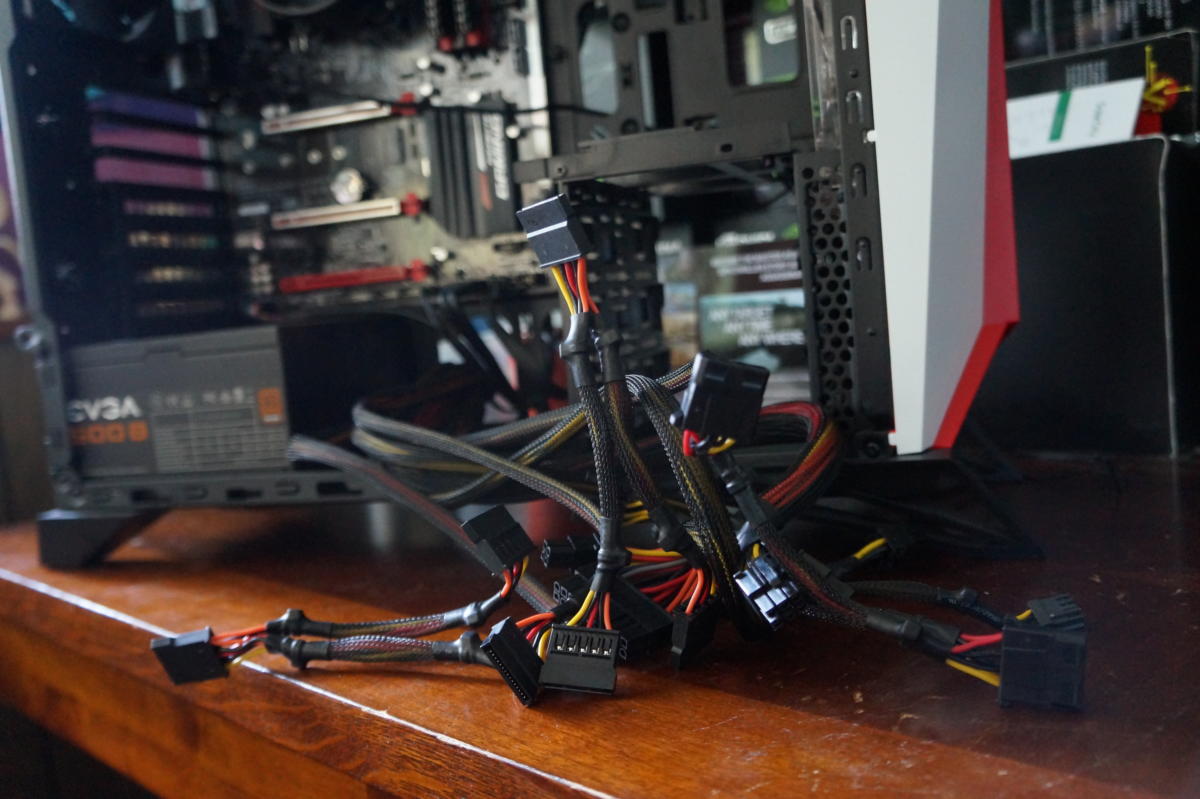 Brad Chacos/IDG
Brad Chacos/IDG This big bundle of wires is why you privation to install the power supply last.
From there, the catch one's breath of the build goes unneurotic easily. Single of the boons of a budget PC? Everything's simple. You preceptor't have to trouble about determination spaces for water-cooling loops, mutlitple storage drives, or RGB light strips. You precisely slot in the basics, wire everything up, and start gaming. Put the office supply in finish to keep its bundle of cables out of your fashio, though.
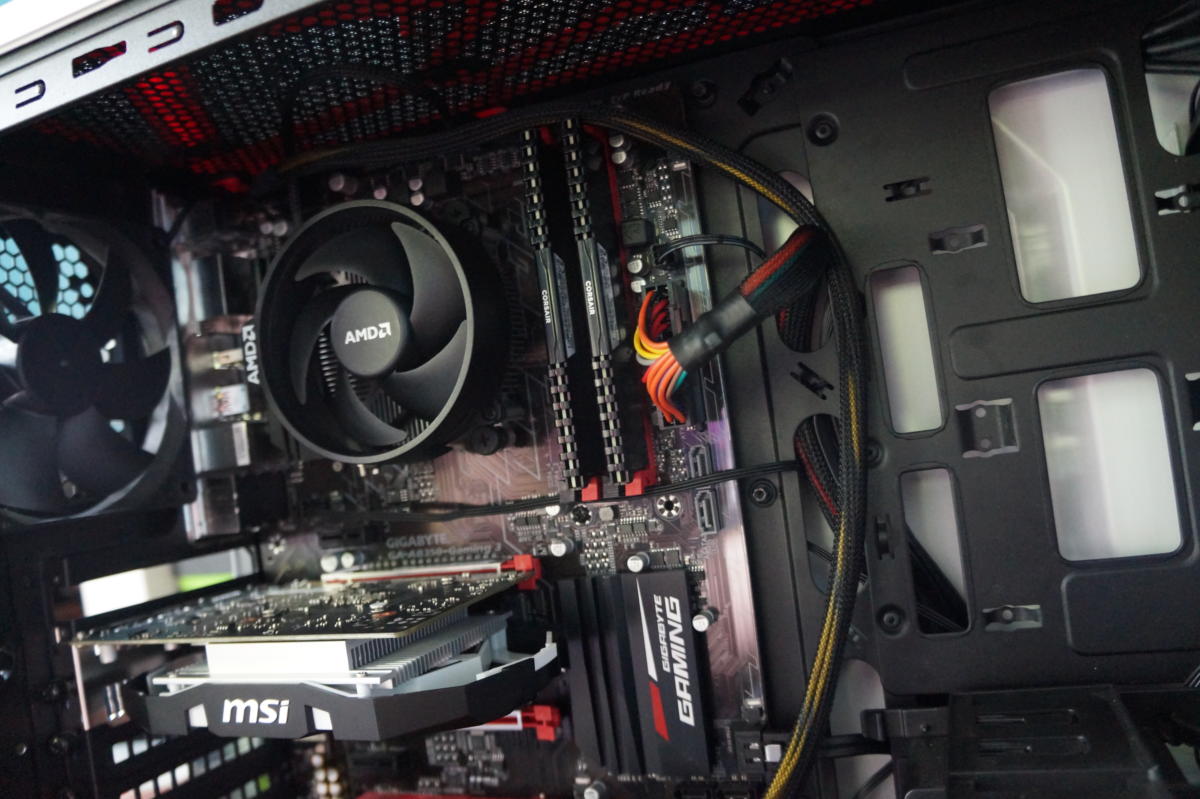 Brad Chacos/IDG
Brad Chacos/IDG Several wires have to be strewn about the sleazy PC's interior, including two fan cables and the bulky 8-thole CPU power connector.
Oral presentation of which, cable direction is the one bugbear of this affordable Ryzen human body. The Barbary pirate Specification-Important doesn't include many cable-routing holes on the top of the inning Oregon rear of the case, and then I aroused having to string cardinal fan cables and the 8-pin Mainframe power connector crossways the interior of the case instead than tucking them away neatly. Ugh. That's compounded by the Spec-Alpha's lack of room behind the motherboard tray. With no more room to hide out behind the motherboard, unused tomato ketchup- and mustard-colored cables from the non-standard EVGA power supply just sit in an ugly ball on the bottom of the case.
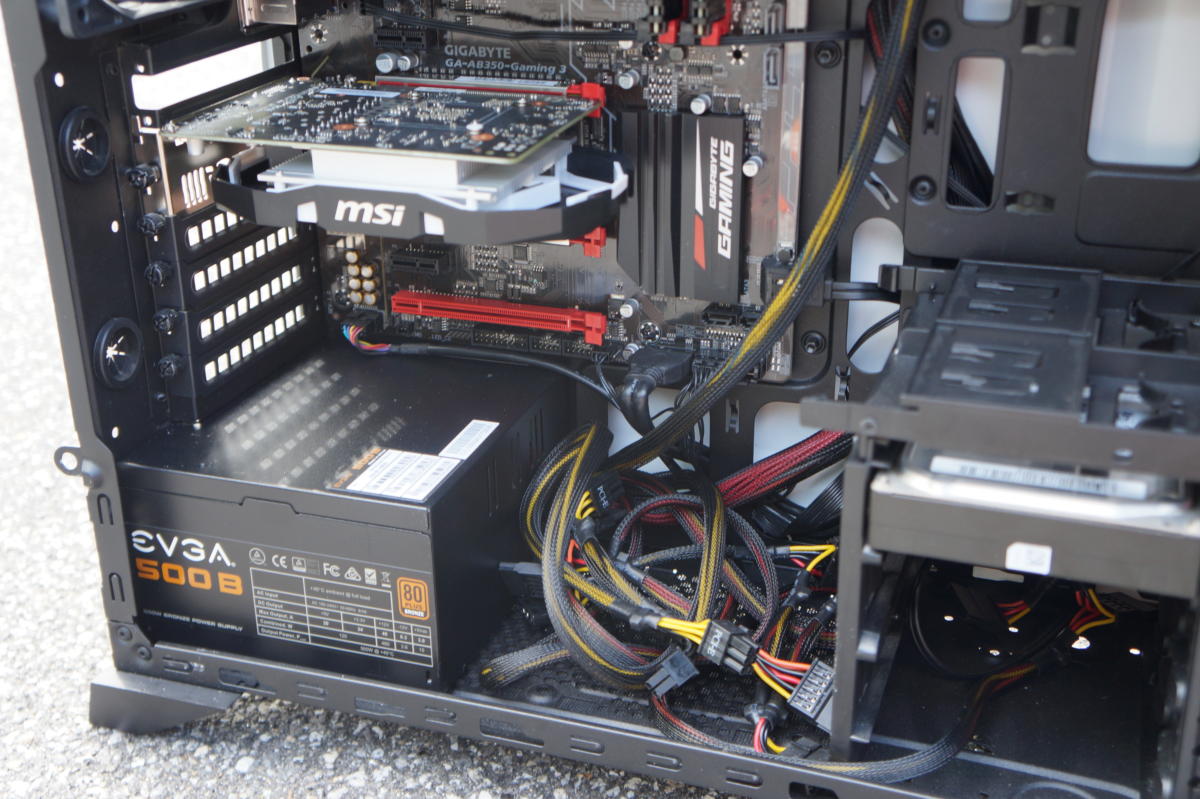 Brad Chacos/IDG
Brad Chacos/IDG I'm dying privileged—just it whole kit!
I'm real particular about line direction and the closing lead here makes my eyes hurt—doubly thusly because of the Spec-Alpha's large side window, which rubs all those ugly cables in my face. A cheaper case with no side window might actually wind up looking much irresistible overall for a budget build ilk this. Out of sight, out of mind.
But that's nitpicking. This PC works like a charm!
Next page: Public presentation and bottom melodic phras
Cheesy Ryzen gaming Microcomputer performance
Recovered, most of it.
After using an SSD for old age, returning to a 7,200rpm hard drive is torturous. Instalmen Windows 10 took hours and hours. Installation our suite of games to benchmark took long. Heck, even just allocating disk blank space for those games took Steam around 10 minutes a pop. Boot times and gross arrangement responsiveness are perceptibly slower than what you'd get with an SSD. I'm not used to living the spinning-platter storage life anymore.
Information technology's worthwhile at this price full stop though. The games ran good fine erstwhile they were installed, and you could sole get a 120GB SSD or thus for the same price as the $550 Ryzen 3 rig's 1TB Winchester drive. The four games we installed and proven on the scheme were more or less 20GB, 38GB, 60GB, and 70GB, or about 188GB in total. That's already far more than than you could fit on a comparably priced SSD, because games are as well damned heavy these days.
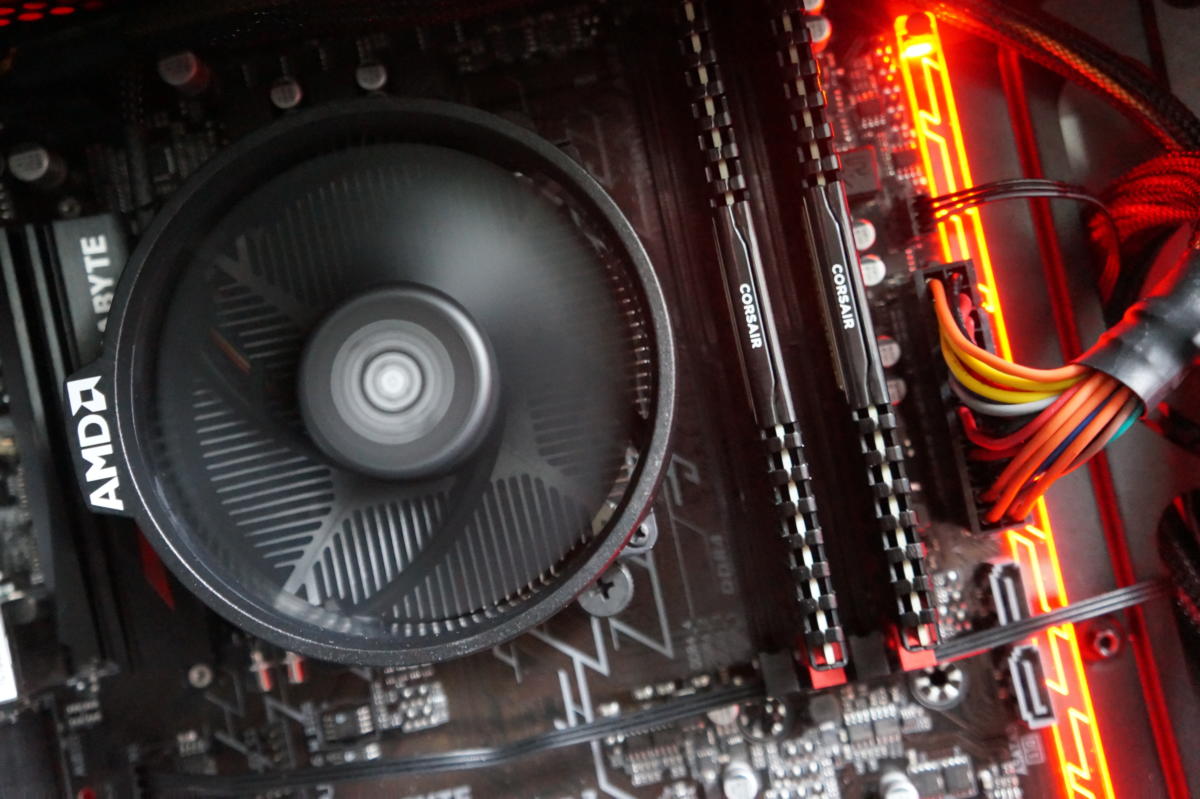 Brad Chacos/IDG
Brad Chacos/IDG Only upgrading the storage should represent your first priority for succeeding upgrades. If you finish with a little of cash in on your pocket at some point, gain vigor a tiny SSD for Windows and your most-exploited programs to supercharge the day-to-day spirit of this rig.
We're here for the games, though. I tested four of them on the $550 Ryzen 3 Microcomputer: Torpedo, Salary increase of the Tomb Raider, Grand Larceny Auto V, and Ghost Recon: Wildlands. None overly stresses the CPU (as this isn't a review of the Ryzen 3 1200) but they were all picked for specific reasons.
Rise of the Tomb Raider conventional a Ryzen-special performance update shortly after AMD's chips launched. We tested it in DirectX 11.
One oddity we noticed? While linear the benchmark, the initial platforms and trees in the Geothermal Valley portion loaded very slow, exclusively pop into place As you neared their location. We didn't notice the issue during regulation gameplay, though. The GTX 1050's limited 2GB RAM caused some stuttering at the Richly graphics preset, which could be eliminated by dropping the game's Texture Quality setting to Culture medium.
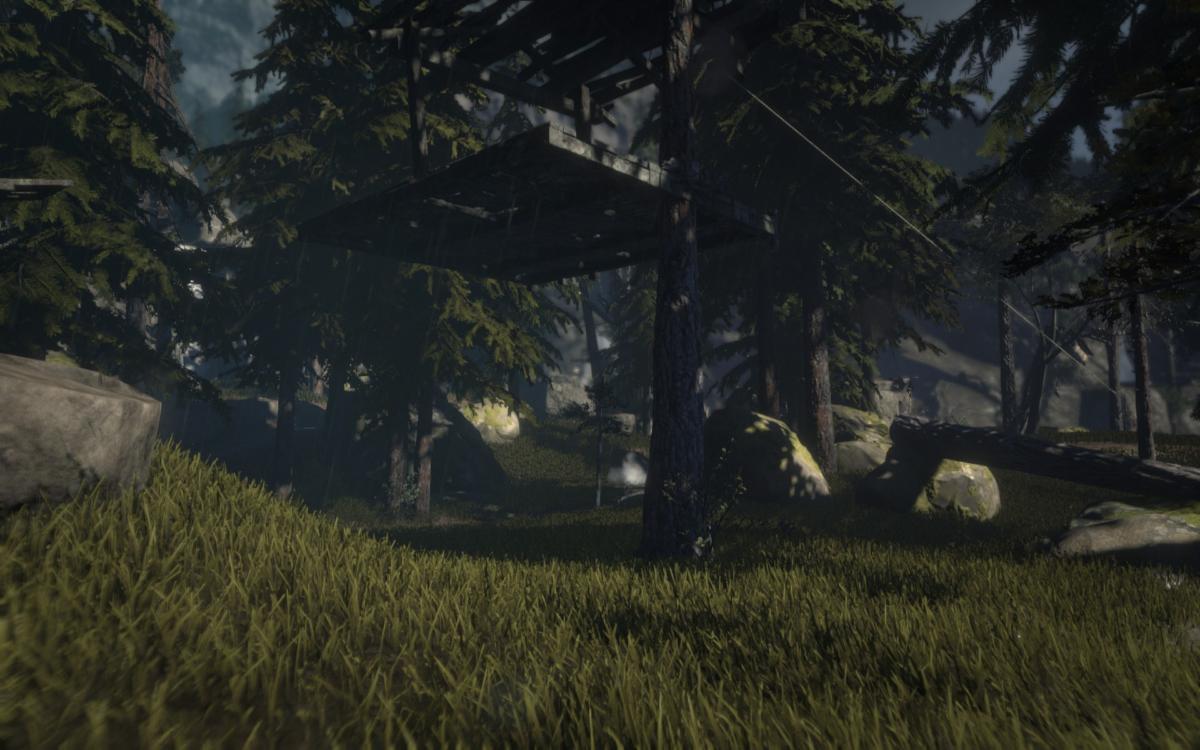 Brad Chacos/IDG
Brad Chacos/IDG Trees and platforms popping in in Rise of the Grave Looter.
Hitman North Korean won't Lashkar-e-Taiba you enable some features if your graphics card is storage limited, and the 2GB GTX 1050 definitely is. When reviewers tested it on Ryzen 7 alongside Intel's high-end Core i7-7700K chip at 1080p resolution with powerful graphics card game, the Intel chip took the clear lead, so we wanted to ensure how it held dormie in a to a greater extent balanced build. We tried with a high steady of contingent, FXAA enabled, SSAO disabled. Since our scorecard has just 2GB of Tup, Shoote restricted texture caliber to low, with shadow maps and phantasm resolution maxing out at sensitive.
Grand Theft Automobile V is another game that benchmarked better on Core i7 systems than Ryzen 7 systems, so we enclosed it for a real-world reality check. It's still incredibly popular, too.
Here are the graphics settings we used, which the lame lay by default after auto-detecting the organisation's ironware conformation.
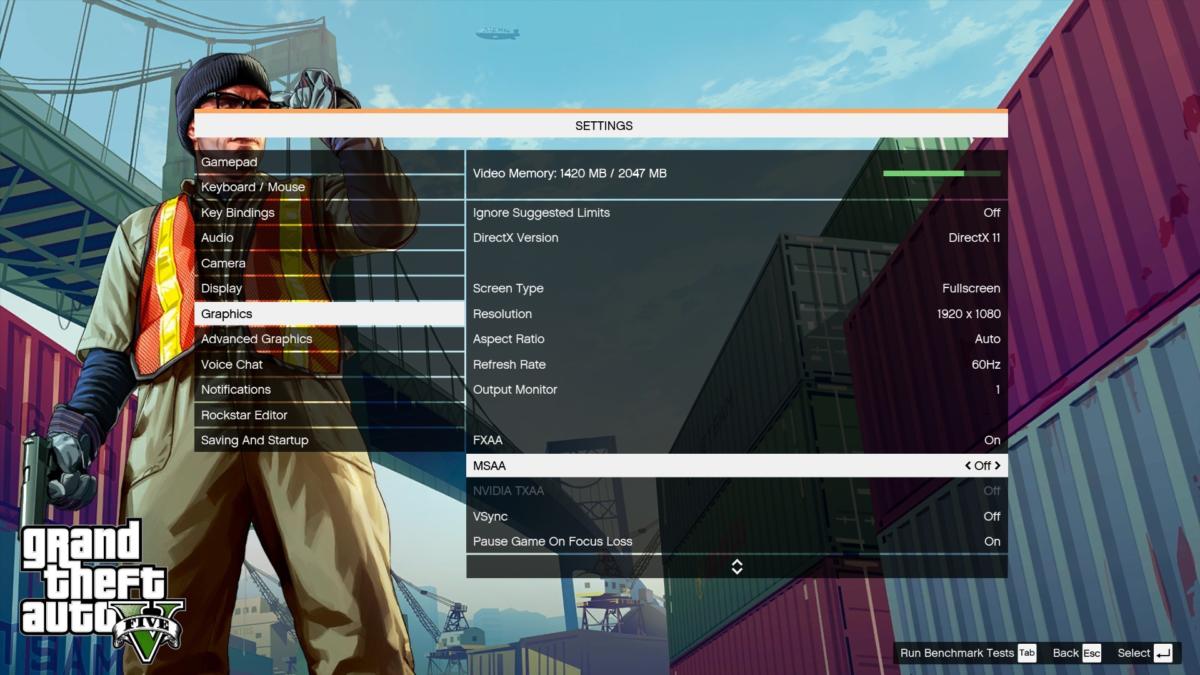 Brad Chacos/IDG
Brad Chacos/IDG 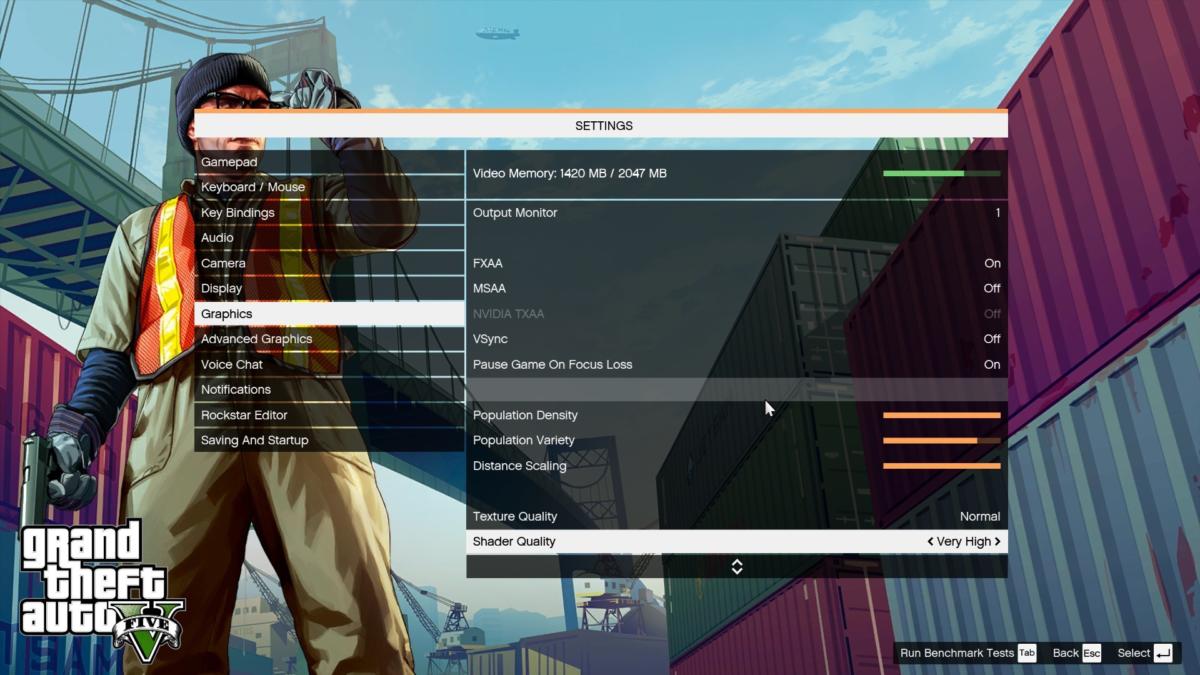 Brad Chacos/IDG
Brad Chacos/IDG 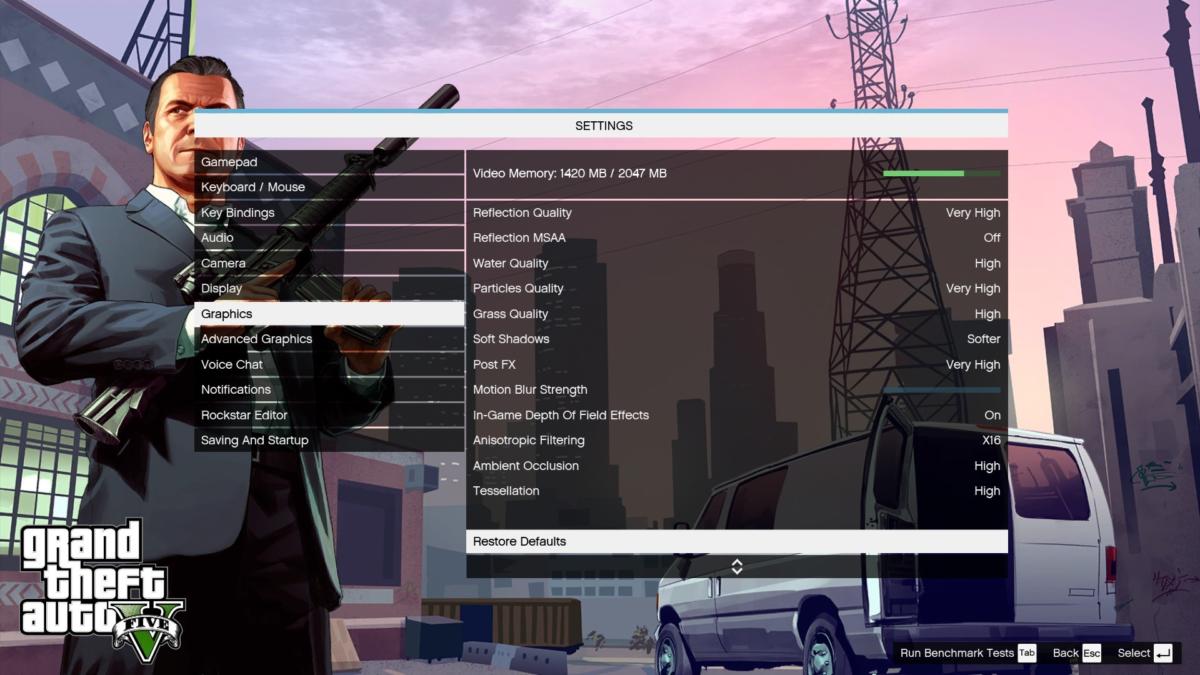 Brad Chacos/IDG
Brad Chacos/IDG Ghost Recon: Wildlands isn't identical touristed, but it's so unsaved gorgeous that it brings most the most powerful graphics cards to their knees. What better game to test a budget gambling rig with? In point of fact, the only way this game leave even take to the woods is if you set the texture quality to low. (Protip: Disable the ambient block graphics setting while you'rhenium at it, As doing so barely impacts the visuals simply added all but 5 frames per secondment of performance in our examination.)
Here's how the $550 Ryzen Personal computer delayed. Every tests were done at 1080p firmness of purpose at High graphics presets, along with whatsoever necessary options tweaks mentioned in the prior notes. Ghost Recon single hung around 30fps at High, so the results down the stairs use the Medium art setting instead.
 Brad Chacos/IDG
Brad Chacos/IDG That's pretty skilful, with every game except Specter Recon: Wildlands hitting a damned playable 50fps or more. And you can perplex Ghost Recon closer by enabling the Medium graphics preset, turning downwards texture quality, and incapacitating close occlusion. After those tweaks the game averaged a fit 49.5 frames per second. For comparison, some the Xbox One and the PlayStation 4 struggle to maintain 30fps in the game.
And even on this restrained hardware the games still looked pretty damned good.
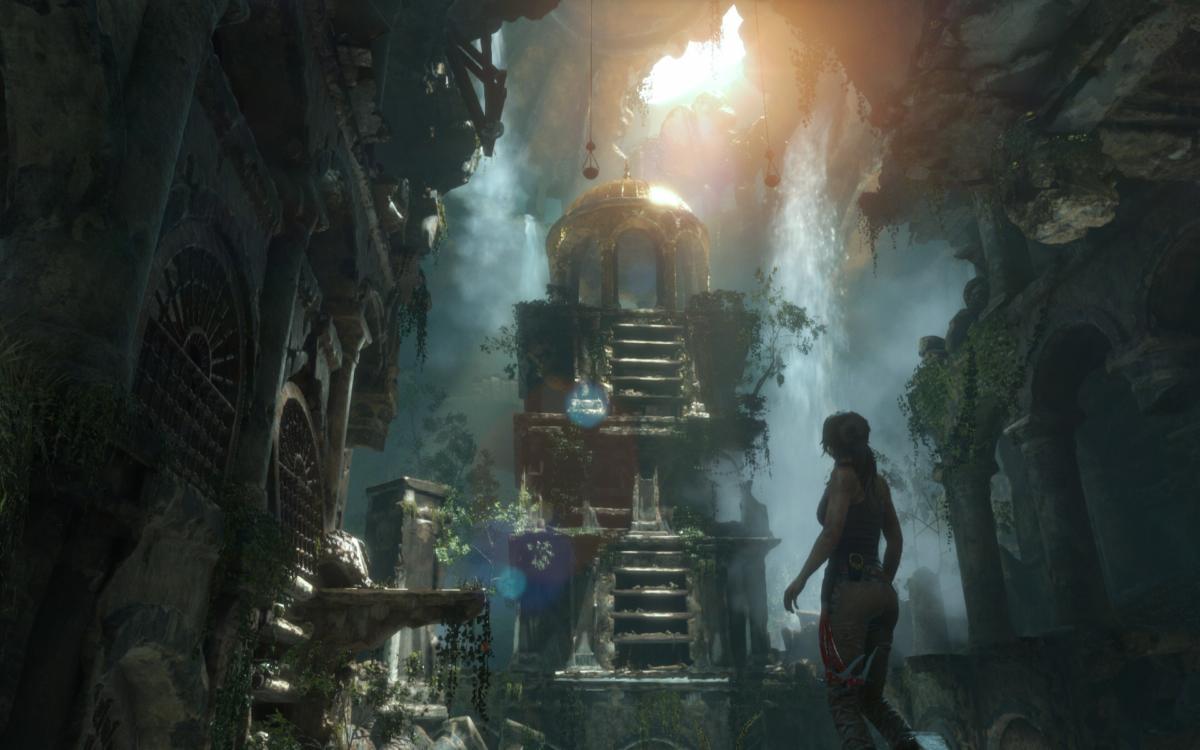 Brad Chacos/IDG
Brad Chacos/IDG Next pageboy: Overclocking and final thoughts
Cheap Ryzen gaming PC overclocking, final thoughts
You can get back better performance out of this budget Ryzen rig. The whole understanding to create a Ryzen 3 build with a B350-based motherboard is to capitalise of the program's unique power to overclock—and I'm happy to report that the Ryzen 3 1200 overclocks just as well as its big brothers.
Even victimisation the tiny Ghost Stealth cooler included in the box, I was competent to push the CPU the whole way adequate a 3.9GHz all-core overclock with AMD's Ryzen Master software package at 1.325 volts. I could've pushed information technology still boost with a more potent thirdly-party tank, American Samoa the CPU worked small at 4GHz at 1.35 volts—aka the maximum AMD recommends for long-term use—but cranking the voltage sent temperatures skyrocketing from 57 degrees Celsius at 3.9GHz to 66 degrees at 4GHz. Better safe than sorry with pricey PC hardware!
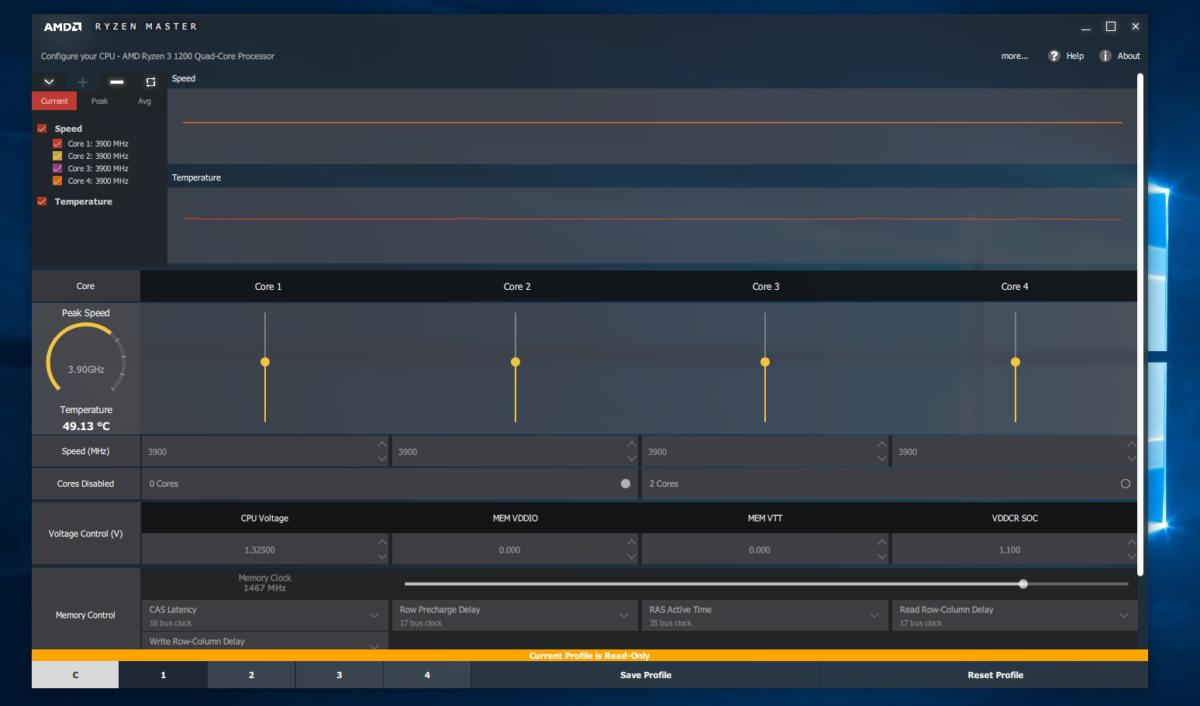 Brad Chacos/IDG
Brad Chacos/IDG AMD's Ryzen Master overclocking software shows our final overclock settings.
Overclocking the Ryzen 3 1200 and performing PCWorld's other Ryzen-boosting PC performance tips (like sanctioning higher memory speeds and AMD's made-to-order power plan) really improved the underlying feel for of the system. Responsiveness improved on the desktop, and minimum frame rates noticeably improved in games, creating a much drum sander experience.
Average frame rates didn't jump much, but that's to be predicted in that rig, as the gaming experience is small by the modest graphics card. The overclock would help more if you ever decide to upgrade your graphics hardware. The higher clock speeds will also improve execution in many non-gaming desktop programs, but that's not the purpose of this article.
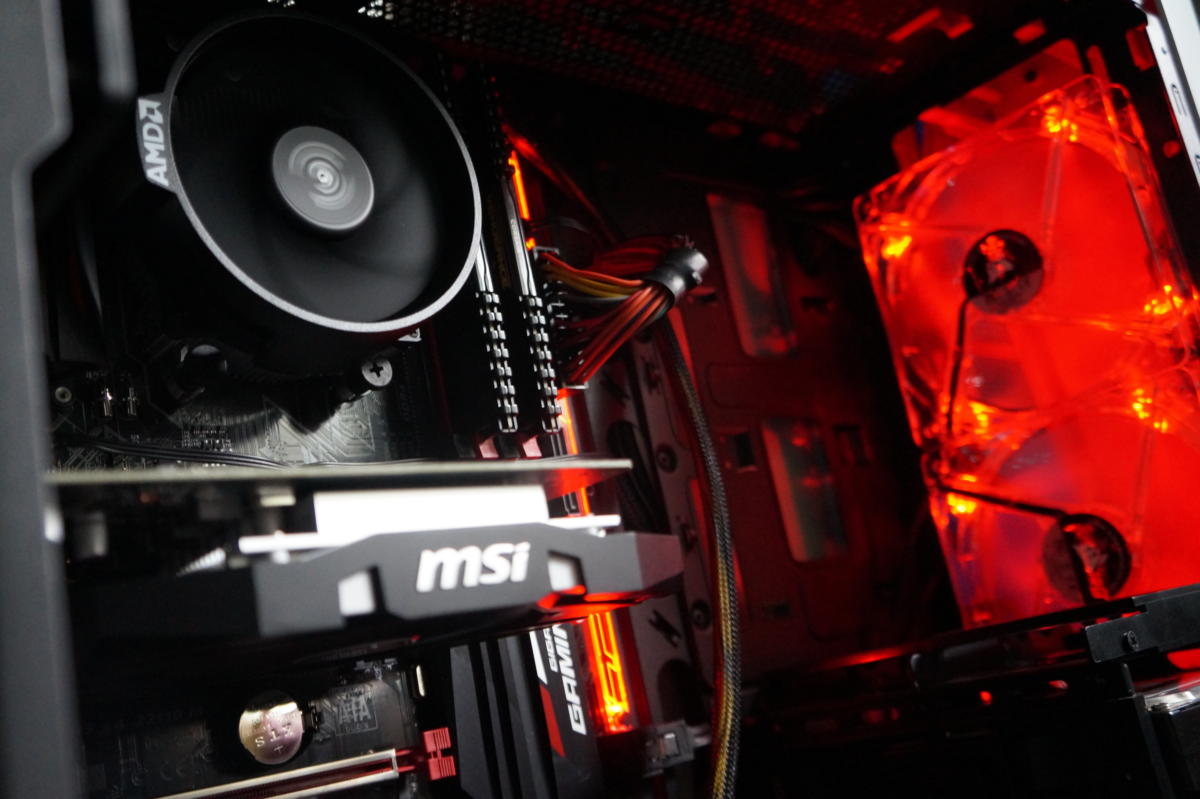 Brad Chacos/IDG
Brad Chacos/IDG All in all, this Ryzen 3 1200 system is a blame decent gaming PC along a doable budget, and IT has one hell of an upgrade route for the future.
The motherboard supports the stylish high-destruction storage engineering, while AMD's long-lasting AM4 living means you could drop in a second gear- OR third-gen Ryzen buffalo chip in a few years to breathe new life into the rig. Bu swapping in a Radeon RX 580 surgery GeForce GTX 1060 graphics card to replace the GTX 1050 would transform this from a comme il faut entry-level gaming PC into a 1080p powerhouse capable of acting games at well northeasterly of the hallowed 60fps with all the visual bells in whistles enabled.
That's a hell of a batch better than your $550 would get you just a hardly a months back. Affordable quadriceps-core computing is finally hither, and it's last built for the future.
Just keep goin an eye on your games' texture quality—and buy an SSD as shortly as you're able.
Note: When you purchase something subsequently clicking links in our articles, we may earn a small commission. Read our consort link policy for more inside information.
Source: https://www.pcworld.com/article/407196/build-a-budget-ryzen-gaming-pc.html
Posted by: wagnerlagnity.blogspot.com


0 Response to "Build a cheap Ryzen gaming PC for $550 or less - wagnerlagnity"
Post a Comment